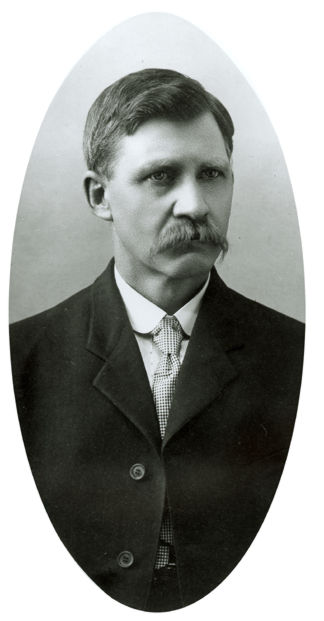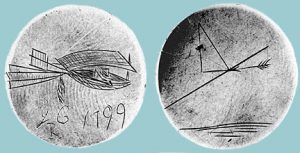The Rest Of The Story – March 13, 2020

The Man Who Changed The Complexion of Aviation, and Space, Using Simplicity as The Foundation For His Success – February 26, 2021
February 28, 2021
Revisionist History and Aviation – March 19, 2021
March 20, 2021RN3DB
March 12, 2021
Good Morning,
Over the past few months I have presented a picture of some very important milestones in the growth of aviation and some of the people who made a difference. Now, I want to conclude with how the pieces came together to make it all happen. This article is a compilation of thoughts, and facts, previously presented. So, let’s talk aviation history and remember:
“Ideas, and inventions, rarely spring from a single seed, but are like a garden, an amalgamation of growth from different seeds.”
Enjoy…………………………………
Man’s fascination with flight is as old as man’s quest for happiness; however, while happiness seems to be as elusive as ever it is safe to say that beginning in the 18th century things began to come together with aviation. It is important to note that while inventors had tried for centuries to mimic the flight of birds, with a pair of fabricated wings, it was not until the late 18th century that the aerodynamic forces that make a lifting surface work were mastered and documented. The picture, etchings, above are the representation of those values, and were made by a man often called the “Father of Aviation.”

Sir George Cayley
(1773 – 1857)
In 1799, Sir George Cayley designed a configuration that was basically in the form of a modern airplane with a fuselage and wings. Etched on a silver disk this design bears a close relationship to the modern flying machines of more than a century later. On one side of the disc he showed the forces that govern flight. The etching shows a fixed main wing, a fuselage, a cruciform tail unit with surfaces for vertical and horizontal control, a cockpit for the pilot, and a rudimentary means of propulsion that consisted of revolving vanes which is a precursor to the modern propeller. Thus, one hundred years before the Wright brothers flew their glider Sir George had established the basic principles and configuration of the modern airplane.
Sir George began to carry out experiments in 1804 which allowed him to learn, and understand, more about aerodynamics and wing structures using a whirling arm device. He observed that birds soared long distances by simply twisting their arched wing surfaces and deduced that fixed-wing machines would fly if the wings were cambered. After Sir George completed these experiments he constructed what is considered to be the first real airplane in history. This glider, which was basically a kite on top of pole, was about 5 feet long, with a fixed wing set at an angle of incidence of 6 degrees, a cruciform tail that was attached to the fuselage by universal joints and movable ballast that controlled the center of gravity.
Throughout his long career Sir. George recognized and searched for solutions to the basic problems of flight. His findings were expansive and included the following:
- Ratio of lift to wing area.
- Calculations which determined the wings center of pressure.
- The importance of eliminating parasitic drag.
- Stability, and control, was the primary function of the tail assembly.
- The necessary bracing of a biplane structure for strength.
- The need to have a wheeled undercarriage.
- The need for a lightweight power source.
- Correctly predicted that sustained flight would not occur until a lightweight engine was developed and that event occurred with the flight of Orville and Wilbur Wright in 1903.
After Sir George’s death there were several influential forces which continued moving aviation forward here in the US, and Europe, but the one man I consider the most influential is Otto Lilienthal.
Otto Lilienthal, a German Engineer/Aviator, was very influential in the accomplishments of the Wright Brothers. After the news of Lilienthal’s death reached the US the Wright Brothers contacted the American authority of knowledge on worldwide flight research, Octave Chanute, who was the publisher of the section “Aeronautics” in the “American Engineer and Railroad Journal.” Octave Chanute, who had translated many parts of Lilienthal’s books on aerodynamics, had become the scientific link between Lilienthal and early aviation development in the US, and Wilbur Wright paid the following tribute to Otto with these words:
“As a missionary he was wonderful. He presented the cause of human flight to his readers so earnestly, so attractively, and so convincingly that it was difficult for anyone to resist the temptation to make an attempt at it himself, … he was without question the greatest of the precursors, and the world owes to him a great debt.“
Lilienthal’s notion “from jump to flight” is widely regarded as the inspiration for aviation pioneers Orville and Wilbur Wright. In an article in Century in September 1908, the Wright Brothers wrote: “We studied several pamphlets published by the Smithsonian Institute, especially articles by Lilienthal, and revealed revealed that the wing surface shape of their 1901 machine was modeled after a Lilienthal design.
Throughout his experiments and his writings, Lilienthal upheld that flight was not to be realized suddenly by the invention of one single machine. He fostered the notion that a long process of study, and a thorough examination of the axioms of aerodynamics, was imperative to the successful invention of a progressive series of viable flying machines with each machine proving more capable than its predecessor.
Two of Lilienthal’s original flying machines survived into the twenty-first century and one of his “No – 11″ glider which is on exhibit at the National Space and Air Museum at the Smithsonian Institute.

Hopefully, we now have a picture of how two of the most influential men in aviation contributed to the Wright Brothers success but there is one final piece I want you to add to your data base on aviation history and the Wright Brothers. Let’s talk about the man who made powered flight possible and his last name was not Wright.
Charles “Charley” Taylor
(Aviation’s First Mechanic of Powered Flight)

When we think of the first powered flight we automatically think of Wilbur and Orville Wright; however, there was a third person involved whose skills were an essential part of the Wright’s success. Charles “Charley” Taylor was that man and without his help the Wright Brothers may have lost their place in history.
Charley started to work for the Wright brothers on June 15, 1901, doing routine repairs on bicycles, so that the Wright brothers could pursue their experiments with gliders which included many trips to Kitty Hawk. After one of these trips, the brothers decided they needed more accurate information and decided they needed to build a small wind tunnel. With this, they would measure the amount, and direction, of air pressures on plane and curved surfaces operating at various angles and improve their theories based on their gliding experiences.
Building the wind tunnel was the first job that Charley Taylor did for the Wright brothers that had any connection with aeronautics. The wind tunnel was a rectangular box with a fan at one end driven by a natural gas engine. The Wright brothers did many experiments in their wind tunnel and from this data they began to make their 1902 glider with Charlie machining many of the parts.
On August 13, 1902, the brothers shipped the glider to Kitty Hawk. They did several flights with the glider and on October 31, 1902, the Wrights returned to Dayton to make plans for a powered airplane. Through their experiments, the Wrights were able to accurately predict the horsepower which was needed to produce and achieve powered flight. The next problem was where to get a light engine that would produce eight horsepower. The Wrights knew that a steam engine might suit their purpose, but a gasoline engine would be safer and more efficient.
In December of 1902, the Wrights sent letters to almost a dozen automobile companies, and gasoline engine manufacturers, asking if they could produce or modify an engine that would develop eight to nine brake horsepower, weigh no more than 180 pounds, and be free from vibration. Most companies replied that they were too busy to undertake building such a special engine. Falling back on their own mechanical experience, the Wright brothers decided to design and build their own engine.
They estimated they could build a four cylinders engine, with four inch stroke and four inch bore weighing no more than 200 pounds with accessories included, and by their calculations it would develop the horsepower necessary to power the glider in flight. Now the problem was who was going to build the engine; however, that problem was quickly solved when the brothers decided to give the task to Charley.
Charley was excited about his new challenge, and from his knowledge of mechanics, and design, he knew that the engine design was basic, straight forward, and simple. Charley had very limited knowledge about gasoline engines, but he used his craftsmanship, genius, and enthusiasm to tackle the task. Without any formal drawings available it was necessary for each part to be crudely sketched out by the Wrights, or Charlie, on a piece of paper, and after a thorough discussion with the brothers, Charley would pin the drawing above his workbench and go to work. Using these sketches, and specifications, he finished the engine in six weeks.
After Wilbur died in May of 1912, of Typhoid fever, the pioneering days of the Wright Brothers were finished. Charley traveled to California to look for work, during the Great Depression, and found a job as a factory mechanic. He invested what money he had in a few hundred acres of land near the Salton Sea and waited to make his fortune – nothing happened and he lost everything.
In November 1955, a reporter discovered Charlie in a Los Angles General Hospital’s charity ward. His income was his Social Security check and an $800 a year annuity fund belatedly established by Orville Wright before his death in 1948. The aviation community immediately started a campaign to raise funds for Charlie and he was moved to a private sanitarium where he died a few months later on January 30, 1956 at the age of 88. Having no close relatives Charles E. Taylor was buried in the Portal of Folded Wings Mausoleum dedicated to aviation pioneers, located in Valhalla Memorial Park, Los Angeles.
Now, let’s consider my opening statement again:
“Ideas, and inventions, rarely spring from a single seed, but are like a garden, an amalgamation of growth from different seeds.”
It is my hope that that you see that history has a way of forgetting a lot of the pieces that make the success of others possible, and of course the most disappointing part of the history presented today is the life of Charley Taylor; however, now you know…………………….. the rest of the story.
Take some time to understand history and dig a little deeper than that which is offered in the mainstream internet. In the coming months I will look back again at history and tell you why Pan Am was not the first and why aviation is moving backward instead of forward. However, until then I would like to wish each and every one only the best that life has to offer. Enjoy the weekend and take care/fly safe.
Robert Novell
March 12, 2021



